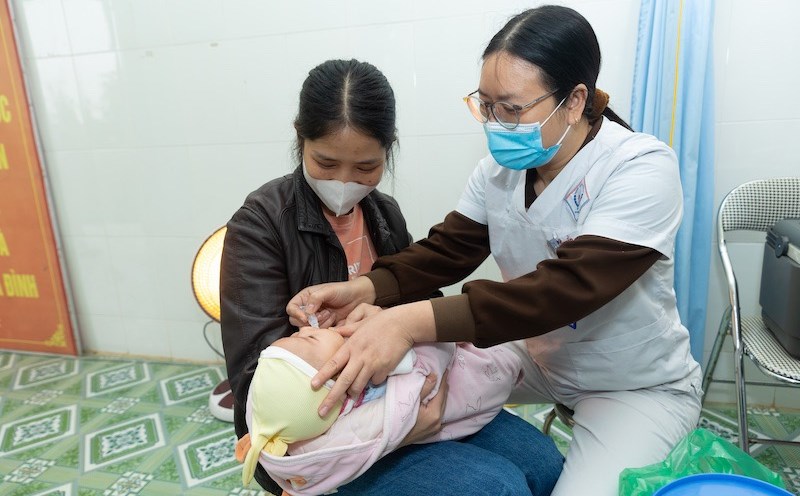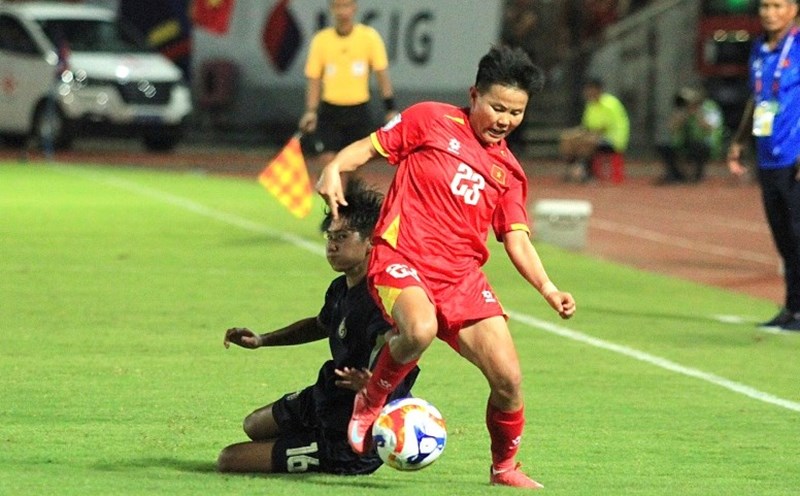When health stations become an extension of hospitals
The Ministry of Health is soliciting opinions on a draft circular regulating the functions and tasks of commune and ward health stations. Accordingly, in addition to initial prevention and treatment, health stations will be allowed to have surgery, inpatient treatment, conduct testing, diagnostic imaging, rehabilitation and many medical techniques such as at the hospital.
The health station is under the comprehensive management of the People's Committee at the commune level and the professional management of the health department, providing primary health care services, preventive medicine, reproductive health care, food safety, population, social protection and disease prevention.
The station will also treat chronic diseases, coordinate medical examination, and preliminary examination for military service. The arrangement of boarding beds is based on actual needs and approved by competent authorities. The station organization includes department heads, deputy heads and departments: Department of Health; medical examination and treatment - rehabilitation; pharmacy - paraclinical; offices and station points.
Consider turning medical stations into mini hospitals
Associate Professor, Dr. Nguyen Lan Hieu - Director of Hanoi Medical University Hospital - said: Medical stations should not be turned into " mini hospitals". The development of the grassroots health system needs to focus on the right functions and strengths, instead of turning commune health stations into " mini hospitals" operating in a dispersed and ineffective manner.
The current commune health station should be oriented to become a specialized clinic with the rotation of doctors from the upper level. Every day of the week, a specialist comes to examine, consult and provide medicine to people. For example: Monday Cardiology, Tuesday Endocrinology, Wednesday Obstetrics, Thursday Pediatrics... This model both takes advantage of existing human resources and helps people access quality healthcare without having to travel far.
District health care now known as grassroots health care will soon abolish the autonomy policy of district hospitals, returning to the budget so that patients can pay salaries to health care staff. The hospital is still allowed to maintain autonomy in management, appointment, and investment in purchasing equipment. The additional income of medical staff will depend on service development and out-of-reach techniques.
The province should focus on treating common diseases in large quantities, avoiding the implementation of too specialized techniques such as organ transplants. Meanwhile, the city and central levels need to build specialized centers in comprehensive general hospitals, closely linked with medical universities to ensure comprehensiveness in health care, avoiding the situation where hospitals are too specialized but lack the ability to treat general treatment.
"At the same time, it is necessary to develop the family doctor system seriously, with models suitable for each subject: rural, urban, elderly, children... remote medical examination and treatment (Telehealth) also needs to be considered an important solution in prevention and treatment, helping to improve the effectiveness of public health care" - Associate Professor. Dr. Nguyen Lan Hieu further analyzed.
Dr. Nguyen Huy Quang - Head of the Consulting, Criticism and Social Assessment Department, Vietnam Medical Association) - said: After the merger of boundaries, the population of many communes and wards increased sharply, requiring health stations to be upgraded in terms of facilities, equipment and especially human resources to properly perform the role of grassroots health care. The goal is to move towards a model equivalent to a general clinic, with enough clinical and paraclinical specialties to meet the needs of general medical examination and treatment.
However, expanding the scale or implementing specialized techniques needs to be based on the actual capacity of each locality. The technical list applied to each health station must be based on infrastructure, equipment and human resources conditions, avoiding simultaneous deployment when not meeting standards. It is necessary to invest in synchronous infrastructure, equipment, training and human resource treatment; it should be piloted in qualified places before expanding. This model is only effective when limitations in human resources, facilities and management are overcome.
It is expected that if the commune health station is upgraded to a " mini hospital", it will help people, especially in remote areas, access healthcare faster, reduce the burden on upper-level hospitals and promptly handle emergency and minor surgery cases, limit complications.
However, many stations currently lack standard facilities, equipment, operating rooms and highly skilled human resources. The investment cost to ensure safe surgery is not small, requiring careful calculation of resources.











